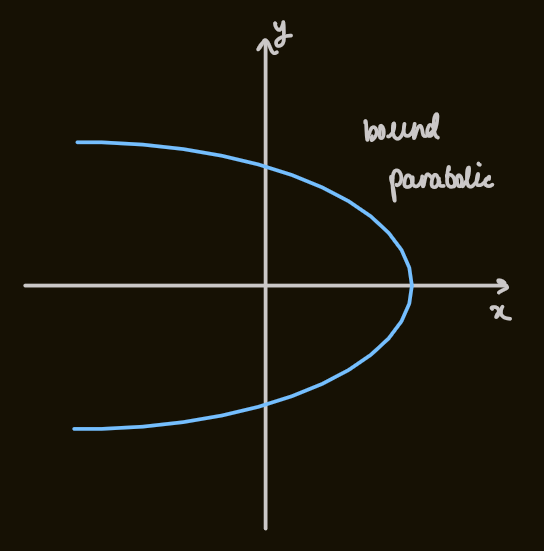PX285 - F5 - central forces - particle approaching the sun
determining the lagrangian
- considering the position vector of the particle in polar coordinates:
- the square of the velocity:
- and the potential energy:
- therefore, the lagrangian is:
- the components of the canonical momentum:
- note: does not have the dimensions of canonical momentum, it is the angular momentum
- the time derivatives:
- the angular momentum, , is a conserved quantity, and it arises from the rotational invariance of the system
- from
- from and
- equation can be solved for
the energy of the system
- the values of that are the roots of are points above

determining the trajectory
- to solve this equation:
[1] adopting a parametric approach: , equivalently, changing the variables from to
[2] dealing with the inverse of
[1] parameterization
- thinking of as , and from equation
- defining: ,
[2] considering the inverse
- defining as the inverse of
- equation can be written as:
- using this in equation
- this is a second-order inhomogeneous differential equation
solving the second-order inhomogeneous differential equation
- considering the homogeneous part:
- which looks like SHM with
- the solutions of the complementary function will be:
case 1
- this is a trivial solution, which is circular orbit of constant radius, the direction given by the sign of
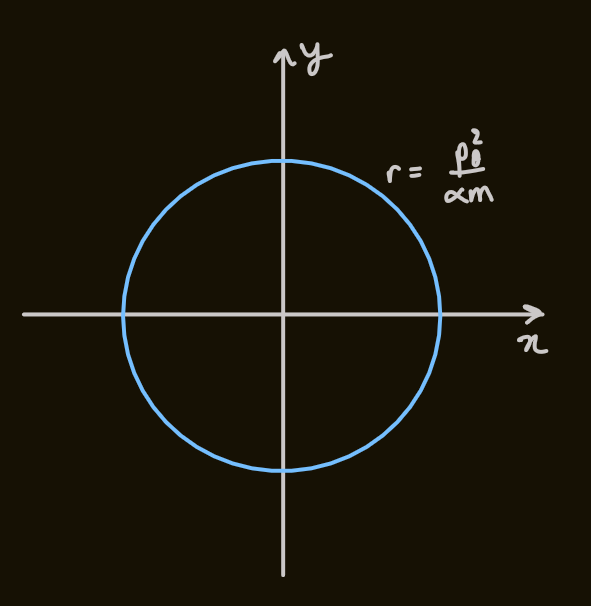
case 2
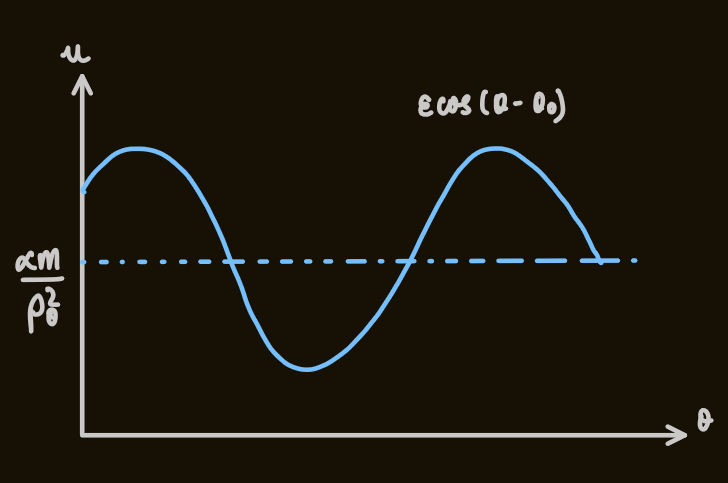
- because
- for unbound orbits, , so this orbit is bound
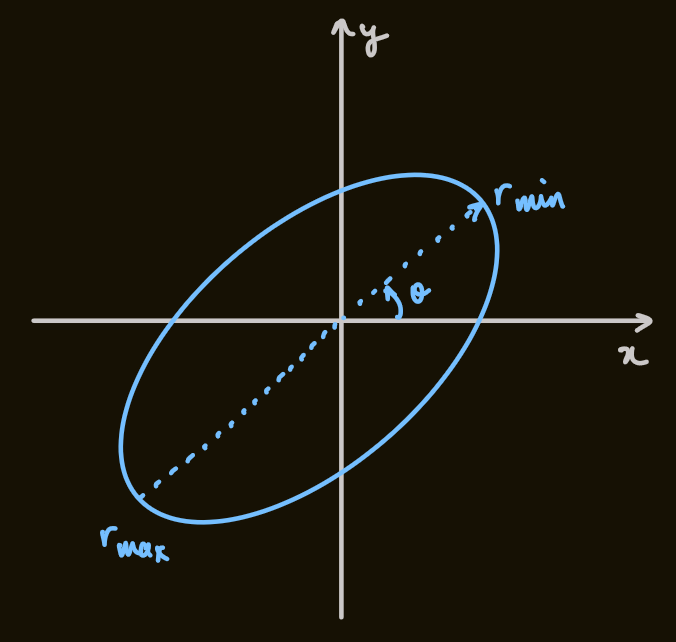
case 3
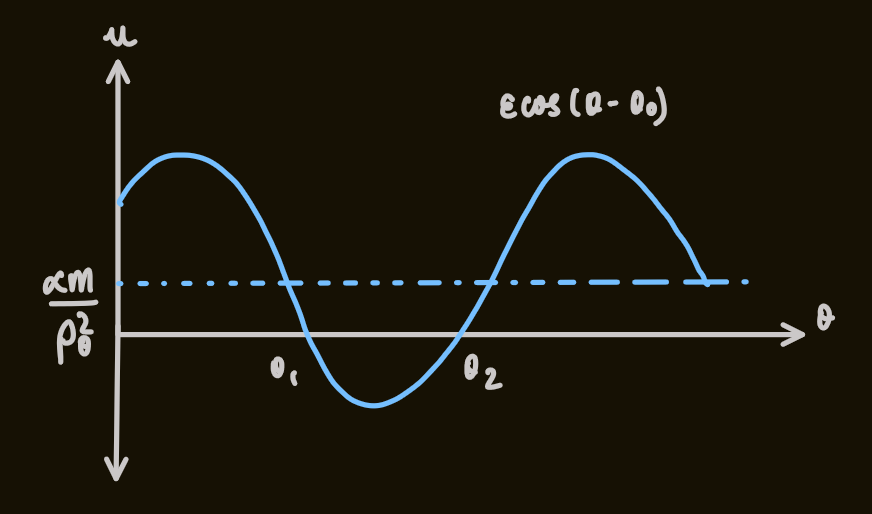
- and at two special angles:
- therefore, this is an unbound orbit, or a 'scattering' event, and the particle follows a hyperbolic orbit
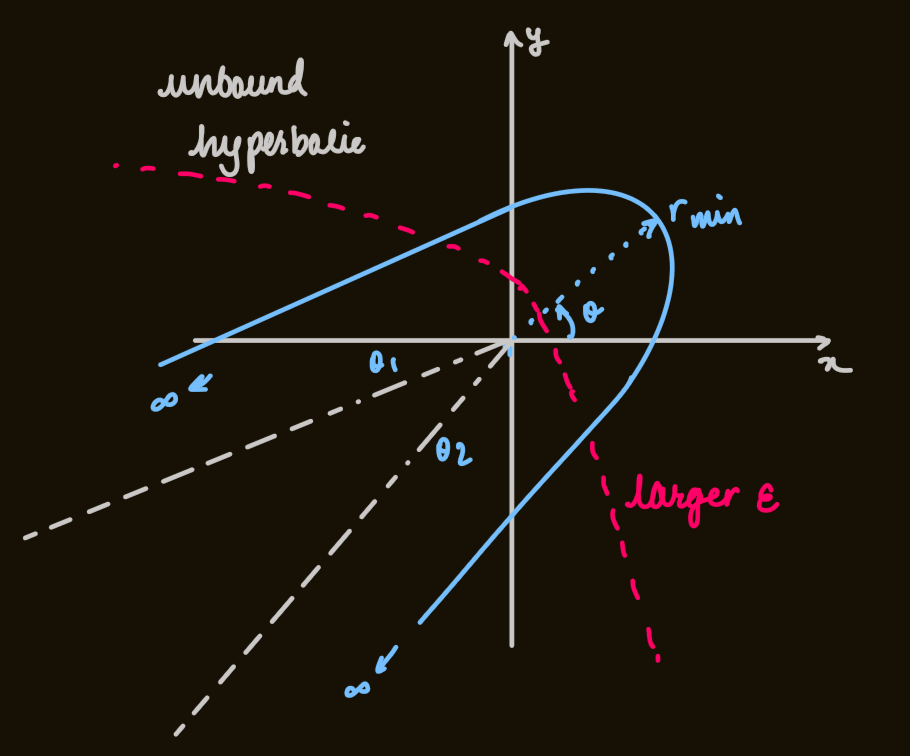
case 4
- the particle follows a bound parabolic orbit
